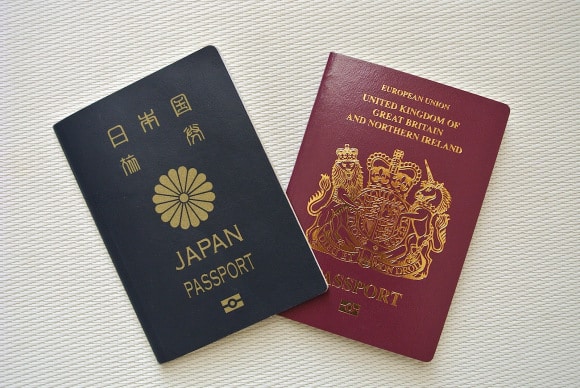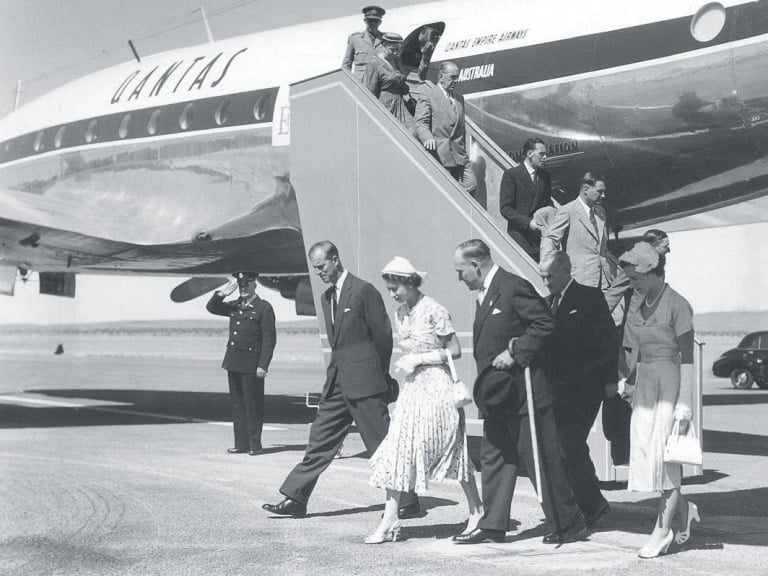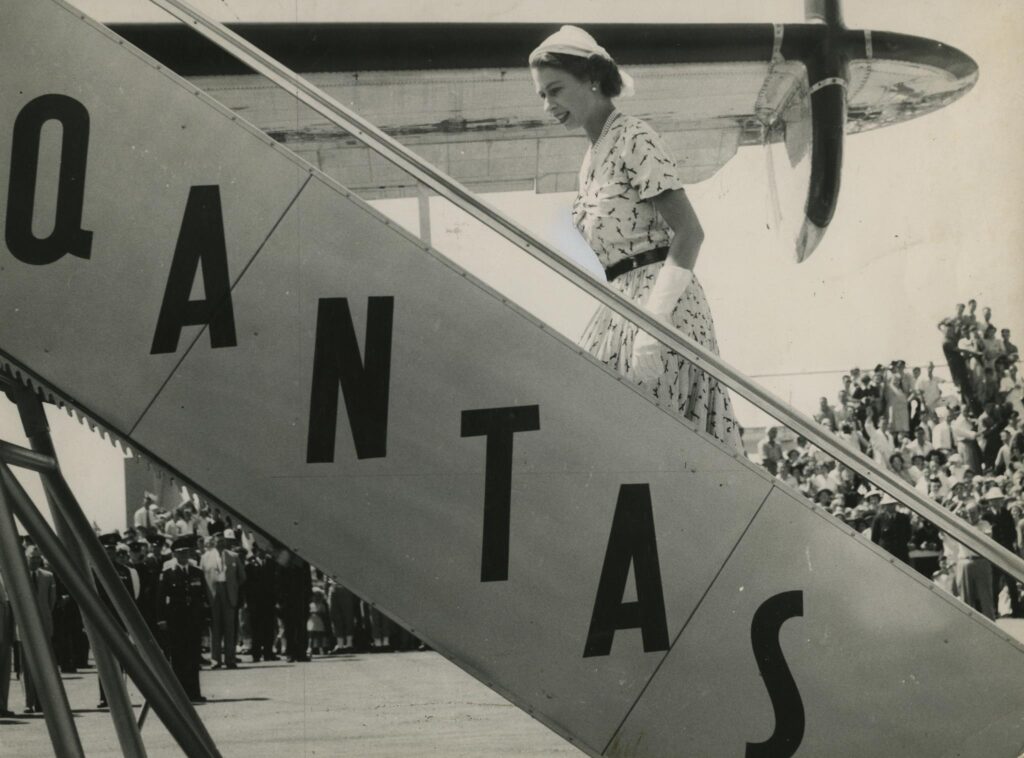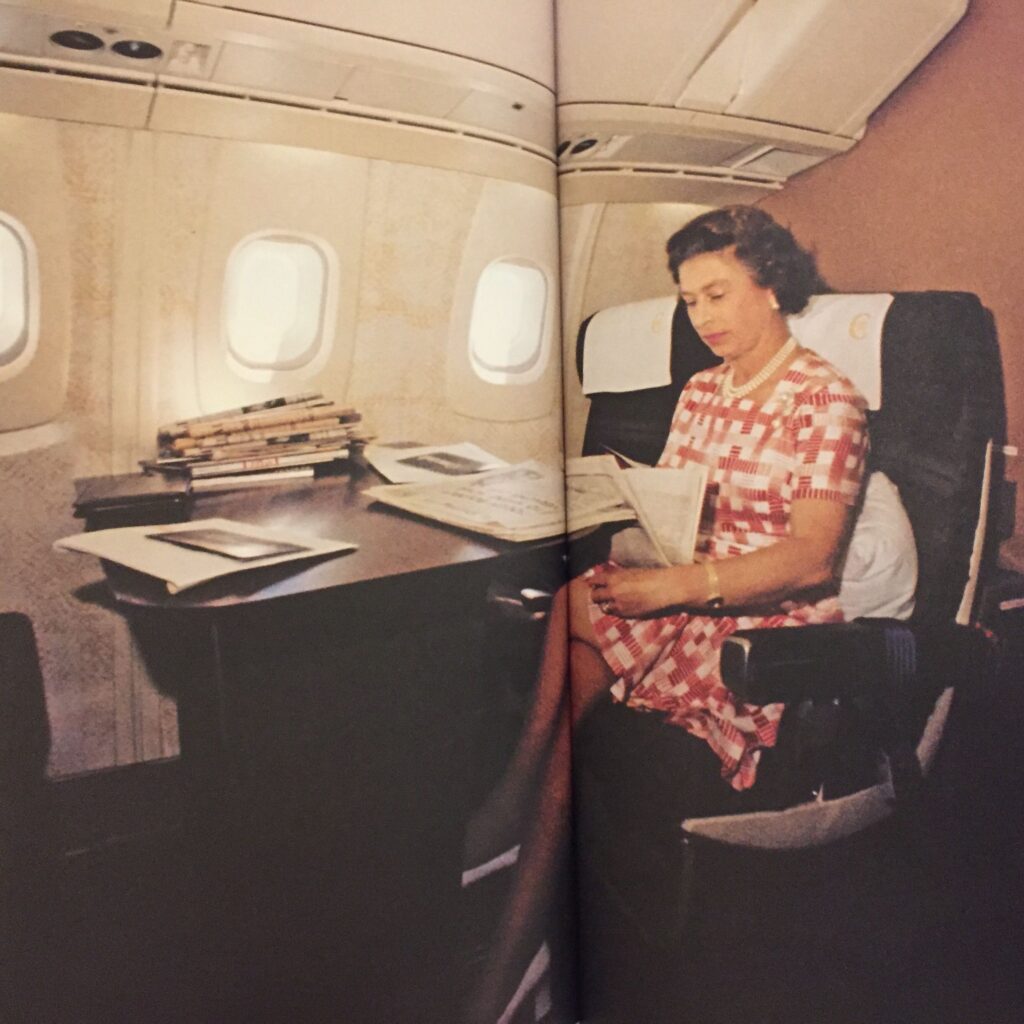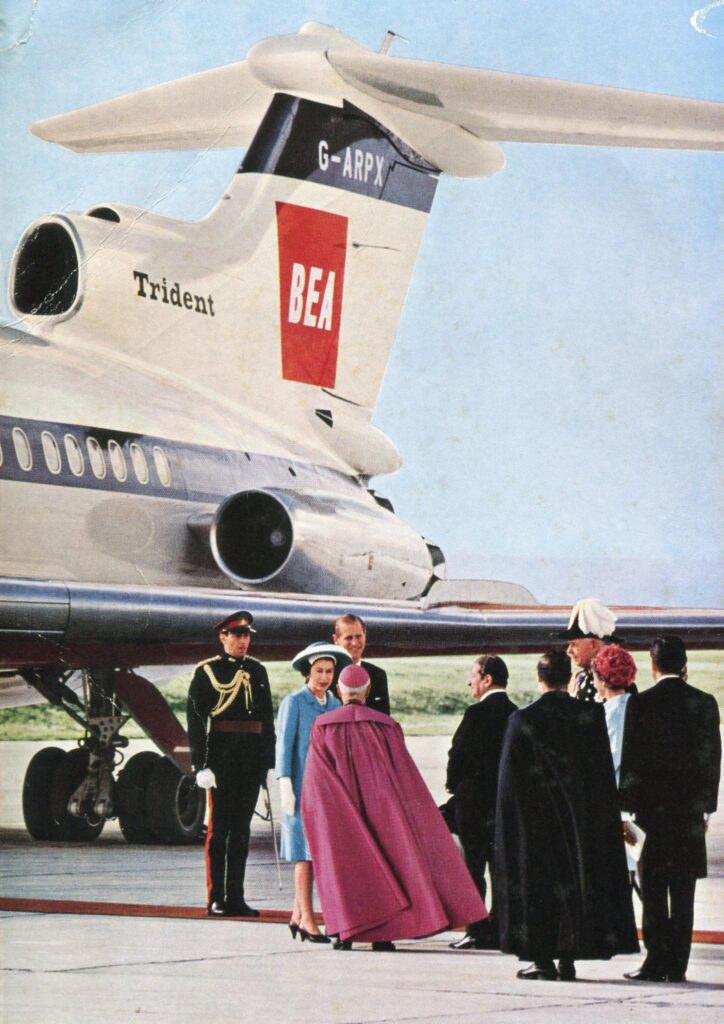Aviation
The Life of Queen Elizabeth Include Several Aviation Milestones
Here are a few of the Aviation adventures of Queen Elizabeth II that are always the most unforgettable for aviation enthusiasts all over the world.
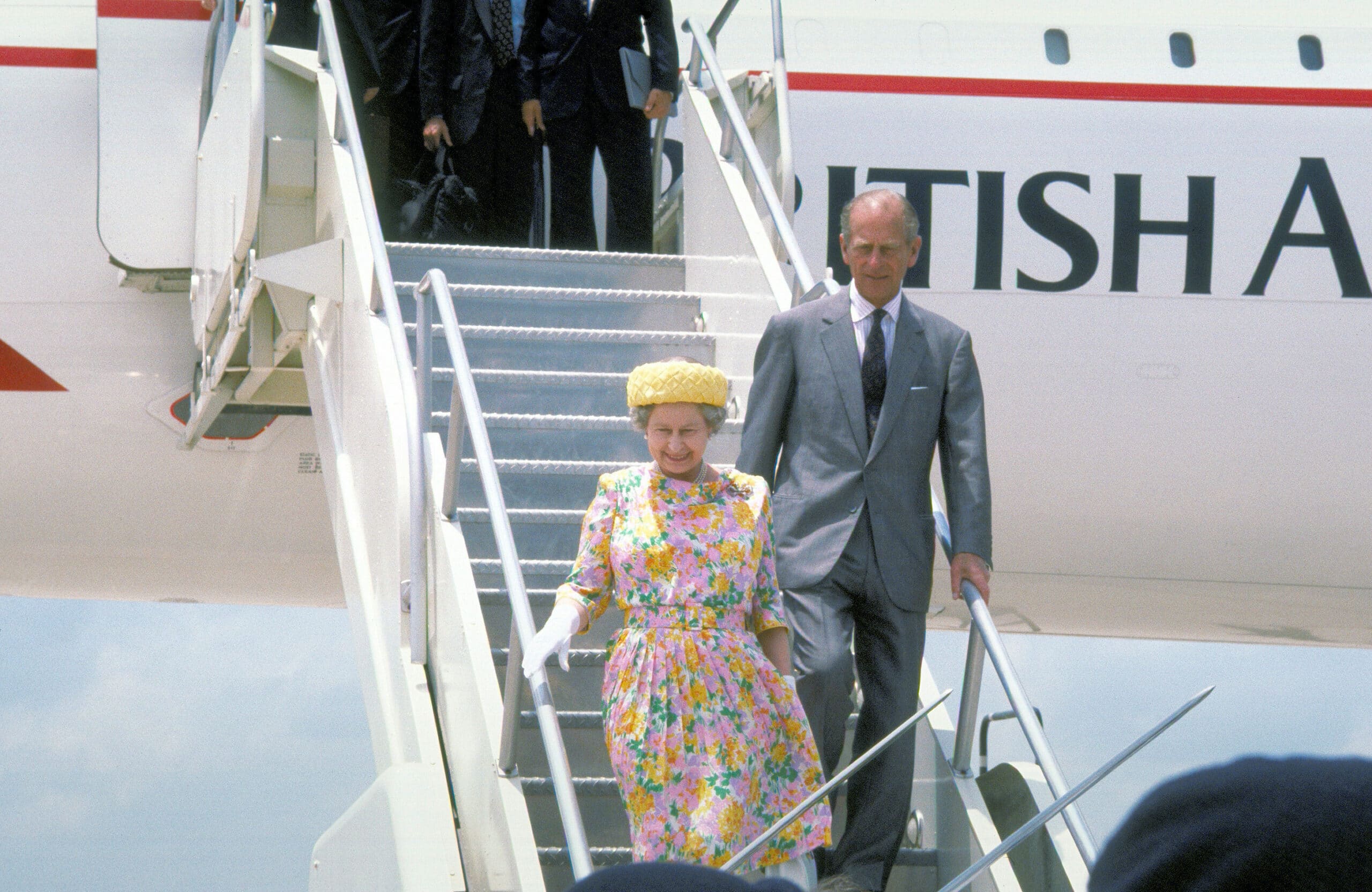
The longest-reigning monarch in British history, Queen Elizabeth II, passed away at the age of 96, leaving behind a legacy that used the media to bridge the gap between the old and the new.
Here are a few of the Aviation adventures of Queen Elizabeth II that are always the most unforgettable for aviation enthusiasts all over the world.
1. The Queen does not need a British passport to travel abroad.
The Queen does not need to own a British passport since they are issued in Her Majesty’s name. The Prince of Wales and The Duke of Edinburgh are two further members of the Royal Family who all possess passports.
The first page of British passports contains a representation of the Royal Arms, together with the following wording: ‘Her Britannic Majesty’s Secretary of State requests and requires in the name of Her Majesty all those whom it may concern to allow the bearer to pass freely without let or hindrance and to afford the bearer such assistance and protection as may be necessary.’
2. In 1954, Her Majesty Queen Elizabeth II was a guest on a Qantas flight.
3. When ‘Her Majesty Queen Elizabeth II visited India
India was visited by Queen Elizabeth three times: in 1961, 1983, and 1997. The most talked-about of her visits was her first one, which took place eight years after her coronation and after nearly 15 years of India’s independence.
President Rajendra Prasad welcomes Queen Elizabeth II of England and her husband Prince Philip, the Duke of Edinburgh, upon their arrival at Delhi’s Palam Airport in January 1961 for a royal trip to India. Source
The Queen visits New Delhi, in 1983
4. How Do the Royals of the United Kingdom Fly?
Strict confidentiality restrictions apply to the crews who have flown with The Queen, however, it is known that the aircraft are modified for The Queen’s usage.
She also rented out military or governmental aircraft, such as the Royal Air Force’s specially modified Airbus A330. The British Prime Minister and other high government officials frequently fly on the aircraft, which has comfortable-looking staggered business class seats with direct aisle access.
She previously chartered Concorde as well as a British Airways Boeing 777 for her trip to Australia for an 11-day visit with the Duke of Edinburgh. Source
QANTAS’ NEW YORK TO SYDNEY NON-STOP RESEARCH FLIGHT SET FOR TAKE-OFF(Opens in a new browser tab)
5. HRH Queen Elizabeth 2 flew a Concorde for the first time in 1977.
Following the Silver Jubilee tour, on November 2, 1977, the Queen took a Concorde flight for the first time from Barbados to Heathrow, as shown in the image below.
There was a 3-hour, 42-minute flight. In February 1979, the Queen travelled extensively throughout the Middle East on Concorde.
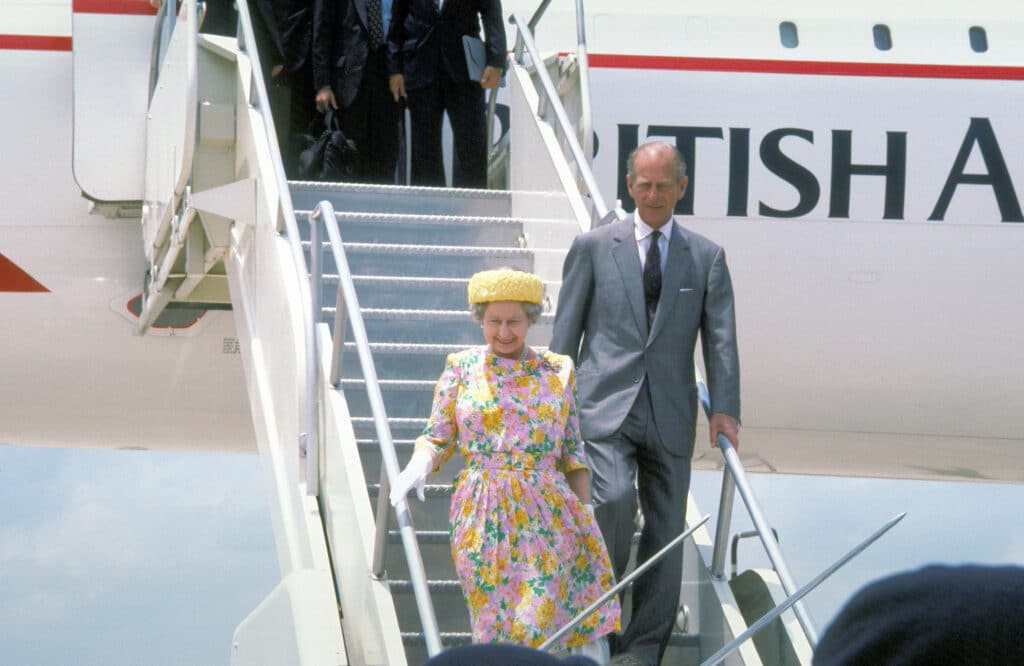
England’s Queen Elizabeth II and her husband, Prince Philip, Duke of Edinburgh, disembark from a British Airways Concorde supersonic transport aircraft upon their arrival for a royal visit.

Her Majesty The Queen, Concorde G-BOAE, Barbados – London Heathrow, 2 November 1977 (Image Credit: British Airways)
6. The Queen frequently took Qantas flights on her official visits to Australia.

Courtesy: Qantas
The Queen defied convention once more in 1995 when she travelled to New Zealand on an ordinary commercial airline for an official 10-day tour. She took the Boeing 747-400, Air New Zealand’s own Queen, on NZ1, the company’s flagship flight from London to Auckland via Los Angeles.
7. Aircraft models that the Royal Family have travelled
8. The Queen’s Terminal
Openings of airport terminals. In addition, the Central Terminal Area at London Heathrow, Terminal 1, Terminal 5, and the North Terminal at Gatwick were all formally inaugurated by the Queen in 1955, 1969, and 2008.
Heathrow Terminal 2 is an airport terminal of Heathrow Airport, the primary airport servicing London, United Kingdom. It is commonly referred to as The Queen’s Terminal. Source
#QueenElizabeth #Royalfamily
A statement from His Majesty The King: pic.twitter.com/AnBiyZCher
— The Royal Family (@RoyalFamily) September 8, 2022

Aviation
COMAC Unveils Plans for the C929 to Rival Airbus and Boeing

After the success of China’s first C919 aircraft, the country is setting its sights on developing a larger plane. COMAC (Commercial Aircraft Corporation of China) has officially confirmed plans to build a widebody aircraft, marking a significant step in its aircraft lineup.
Traditionally, Airbus and Boeing dominate the widebody aircraft market, with decades of expertise in developing planes and engines capable of carrying heavy payloads. China, which currently relies on imported engines, is now aiming to challenge these giants with its own widebody jet, the C929, designed to compete with the Airbus A350 and Boeing 777.
American Airlines Is Looking for Flight Attendants: Apply Now
The C929 will be China’s first independently developed long-range widebody aircraft. It adheres to international airworthiness standards and boasts independent intellectual property rights. The baseline version is designed to seat 280 passengers and offers a range of 12,000 kilometers, catering to global demand for both regional and international air travel.
Russia, which also needs reliable narrowbody and widebody aircraft, could become a key customer for the C929. Additionally, China plans to target the broader Asian market as it continues to expand its aviation capabilities.
Close Call at Heathrow: BA Flight Narrowly Escapes Drone Collision
China’s aviation progress includes the ARJ21 (now called C909), a regional jet with 100 seats for shorter routes, and the C919, a narrowbody jet with 180 seats designed to rival the Boeing 737 MAX and Airbus A320. Both models have found increasing demand in the domestic market.
At China’s largest air show in Zhuhai, COMAC announced that Air China will be the launch customer for the C929 widebody jet, though details about order size and delivery timelines were not disclosed.
Other major deals announced by COMAC include:
- Hainan Airlines: Firm orders for 60 C919 and 40 C909 regional jets.
- Colorful Guizhou Airlines: 30 C909 jets, with 20 firm orders and 10 provisional agreements.
The C929, renamed from the CR929 after Russia withdrew from the joint development project in 2023, is expected to carry 280–400 passengers with a range of 12,000 kilometers, competing directly with Boeing’s 787 Dreamliner.
According to COMAC’s deputy general manager, Tong Yu, the first fuselage section of the C929 is expected by September 2027, with prototype test flights anticipated soon after.
-

 Aviation2 months ago
Aviation2 months agoMicrosoft Flight Simulator Raises $3 Million to Bring Back the An-225 Mriya
-

 Airlines2 months ago
Airlines2 months agoQantas Engineers Stage Walkout Over Cost of Living Concerns
-

 Airlines2 months ago
Airlines2 months agoQatar Citizens Can Travel to the United States Without a Visa
-

 Aviation2 months ago
Aviation2 months agoQatar Airways bans these new Electronic Devices on plane
-

 Airlines2 months ago
Airlines2 months agoJapan Airlines Rolls Out Free Domestic Flights to International Passengers
-

 Defence2 months ago
Defence2 months agoWhich Country Has the Largest Fleet of Fighter Aircraft?
-

 Airport2 months ago
Airport2 months agoWestern Sydney Airport Welcomes Its First Plane After 6 Years of construction
-

 Travel2 months ago
Travel2 months agoQatar Airways Launches Four Additional Flights from Amsterdam

